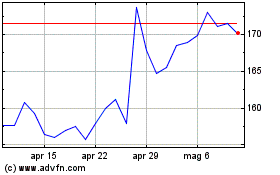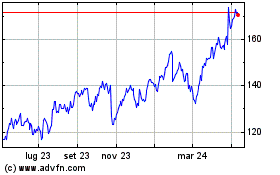By David Pierce
Editor's note: David Pierce is the The Wall Street Journal's new
Personal Technology columnist. Follow him on Twitter @Pierce and
sign up for our column email alerts here.
A couple of weekends ago, my life became a cable-cutter
infomercial.
On the morning of Super Bowl Sunday, my remote stopped
connecting to my Comcast cable box. After an hour spent mostly
waiting for Comcast customer service to "send signals" to my box, I
finally had help -- in the form of a Tuesday morning appointment.
With kickoff coming a bit sooner, I fired up my Roku and opened
YouTube TV, the live-TV service from Alphabet Inc.'s video giant.
Other than a brief hiccup when my Roku rebooted itself, all things
Super Bowl streamed flawlessly for the next eight hours.
People who watched the Super Bowl on Hulu and Sony Corp.'s
PlayStation Vue, two of YouTube TV's competitors, encountered a
compelling endorsement for cable, though. Both services suffered
outages during the game, including one during the thrilling final
moments.
Super Bowl snafus aside, streaming live TV from the internet
works far more reliably now than it used to. Between the five big
names in the space -- the other two are AT&T Inc.'s DirecTV Now
and Dish Network LLC's Sling TV -- you can get everything from a
$20-a-month bare-bones replacement to a $75 option that almost
resembles your cable lineup.
My current pick In the shifting landscape is YouTube TV. It
recently released apps for Roku and Apple TV devices, and on
Wednesday added TBS, CNN and more to the service. (The others have
recently added new channels, too.) It's raising its price to $40 a
month on March 13 to accommodate for the new lineup -- but that's
still a far cry from the $100 or more that people on average pay
for cable, according to the media analysis firm Leichtman Research
Group.
So far, the best thing about ditching satellite or cable is a
sweet release from the constant, throbbing pain of dealing with
your cable company: annoying set-top boxes, inscrutable bills,
limited mobility. But in some ways, especially channel count and
that vague-but-important sense that it'll always work when you need
it, cable still feels like the safer bet.
Here are the four biggest benefits of internet TV:
Portability
Signing up for internet TV is like joining Instagram: Download
the app, get a username and password, off you go. The apps work on
your phone and your iPad, in your web browser and (usually) on the
box you already use to get Netflix in your living room. You'll use
a different remote to watch TV now, but in many cases your viewing
experience won't change much.
Not all services are equally portable, however. PlayStation Vue
doesn't let you stream some channels when you're away from your
home Wi-Fi. Similarly, if you want to stream to a TV via a device
such as a Roku or Apple TV, Hulu's service only works in your own
home, though this limit doesn't apply to mobile devices.
Recommendations
You probably watched only a fraction of the 487 scripted shows
that aired in 2017, not to mention the decades of content also
readily available. Every time you open their app, Hulu and YouTube
find you new stuff -- if you watch football they'll recommend more
football. But YouTube TV also guessed that my "Parks and
Recreation" affinity might transfer to "Party Down." Which it
did.
At a minimum, every streaming TV service lets you save and
quickly find your favorite shows and channels. They tend to split
content into categories -- Kids, News, Sports, etc. -- but the best
recommendations are the ones just for me: They know I prefer
Colbert to Fallon, ESPN to FS1, and the Warriors to the Cavs.
Usability
I like seeing these services finding ways to blend live,
on-demand and recorded content. I've made heavy use of PlayStation
Vue's Recently Watched menu, which combines live and on-demand
content.
These services tend to be far more modern in design than your
average, blocky white-on-blue cable interface. They use large
images and bold text to help you surf. Lots of services let you
watch shows while searching for other content. And these apps all
work well on the phone's smaller screen.
PlayStation Vue and DirecTV Now still use those clunky,
side-scrolling programming guides, which are especially hard to
parse on mobile. They also don't offer much else to help you find
stuff to watch. DirecTV is expected to launch a redesign soon.
Time-shifting
Here's a tip: When you first sign up for an internet TV service,
go in and immediately pick your favorite handful of shows, so the
system starts automatically recording all new episodes. You can
even record shows you won't find on demand.
YouTube TV lets you record as much as you want, and keep it all
for nine months. PlayStation Vue keeps unlimited recordings for 28
days. Hulu and Sling store just 50 hours of video -- Sling even
charges you $5 a month for the privilege. DirecTV Now doesn't offer
recording yet, though it says the feature is coming.
If you could combine the best parts of each service -- Sling's
price flexibility, Hulu's on-demand content, YouTube TV's interface
and recording powers, PlayStation Vue's device compatibility,
DirecTV Now's channel selection -- your internet-TV Voltron would
be nearly perfect. Over time, they're all likely to copy each
other. Still, for now you have a bunch of solid options and no
truly great one.
Among them, though, YouTube TV feels the most ready. It combines
live and recorded TV with the massive YouTube library, so I could
watch an episode of "The Good Place" then dive into bloopers and
late-night interviews with the stars. Now that it's available on
the Roku I use every day, YouTube TV has become my go-to internet
TV service.
Yet it doesn't work on Amazon's popular Fire TV devices. (Come
on, Amazon and Google, can't we all just get along?) Its updated
60-ish channel lineup still doesn't include HGTV or Comedy
Central.
Even as programming gaps continue to shrink, no service can
replace all of cable. Nearly every one of the 100 most popular
channels exists somewhere, but no service has them all. And by the
time you get close, that $20 Sling plan you thought you were
signing up for turns into more like $50 or $60 before you even get
to HBO or Showtime.
Cable and the other traditional pay-TV providers may be more
expensive and frustrating, but at least they offer everything. And
Comcast, Verizon and the rest are watching their new competition.
Soon, you'll likely get many of the features of internet TV with
your existing subscription, once they feel the pressure to
compete.
Where does all that leave you? Maybe still paying your cable
bill for a while, if it isn't too high. If it is, call your cable
company and threaten to leave. Reps can often find a way to reduce
your monthly fees.
But if you're willing to miss out on a few shows, and suffer
through the occasional outage, you can already get a TV experience
that's much more fun and modern -- and mobile -- than cable, and
usually saves money, too. We're heading toward the future of TV.
It's just buffering a little on the way.
(END) Dow Jones Newswires
February 14, 2018 12:12 ET (17:12 GMT)
Copyright (c) 2018 Dow Jones & Company, Inc.
Grafico Azioni Alphabet (NASDAQ:GOOG)
Storico
Da Mar 2024 a Apr 2024

Grafico Azioni Alphabet (NASDAQ:GOOG)
Storico
Da Apr 2023 a Apr 2024
